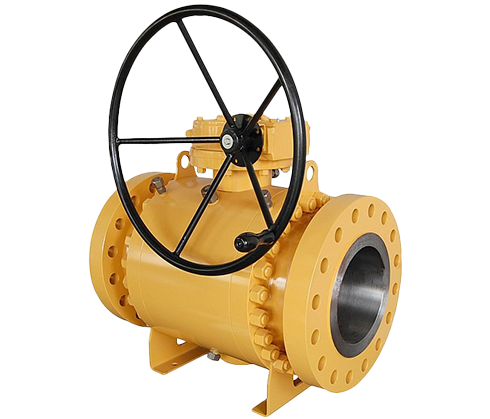2025-06-16
In industrial pipeline systems, the selection of high-performance valves is essential for ensuring both operational efficiency and long-term reliability. Among various valve types, the Balon trunnion ball valve stands out for its structural integrity, ease of use, and consistent performance in demanding applications.

A primary advantage of the Balon trunnion ball valve lies in its fixed ball design. Unlike floating ball valves, the trunnion configuration secures the ball in place with upper and lower supports. This design minimizes the load on valve seats, particularly under high-pressure conditions, reducing seat wear and extending service life. The result is less maintenance downtime and improved cost efficiency over time.
Another key benefit is its effective sealing performance. The Balon trunnion ball valve typically incorporates spring-loaded seats that remain in contact with the ball, even when system pressure is low. This feature ensures reliable shutoff capabilities, enhancing system safety. Additionally, many Balon valves include double block and bleed capabilities, allowing for isolation and depressurization on both sides of the valve—an important function during inspection or replacement.
Durability is also a defining characteristic of Balon valves. These valves are constructed using robust materials such as carbon steel, stainless steel, or specialty alloys, depending on the application. Coupled with rigorous quality control and precision machining, Balon trunnion ball valves demonstrate strong resistance to corrosion, temperature fluctuations, and mechanical stress.
Sanitary slide gate control valves are widely used in food, pharmaceutical, and chemical processing industries, where cleanliness and product integrity are paramount. To function effectively in such sensitive environments, these valves must meet several essential technical and hygienic conditions.
First and foremost, material selection is critical. The valve components that come into contact with the product must be made of high-grade, non-reactive materials—most commonly 304 or 316L stainless steel. These materials are corrosion-resistant and compatible with a wide range of cleaning agents, helping to maintain sanitary conditions and prevent contamination.
Surface finish is another important criterion. Sanitary slide gate valves must have smooth, crevice-free internal surfaces with low surface roughness values (typically Ra ≤ 0.8 µm). This ensures easy cleaning and prevents bacterial buildup. Polished surfaces also contribute to better flow dynamics and reduce the likelihood of residue retention.
The design of the valve should support Clean-in-Place (CIP) and Sterilize-in-Place (SIP) processes. This means the valve must allow for thorough cleaning without disassembly. Gaskets and seals used within the valve must also comply with FDA or USP Class VI standards, ensuring they are safe for contact with consumable products and capable of withstanding high temperatures and cleaning chemicals.
Functionally, sanitary slide gate valves must offer precise control over material flow. They are often used in applications involving bulk solids or viscous liquids, so the valve’s actuation system—manual, pneumatic, or electric—must be capable of delivering accurate positioning and smooth operation. The gate mechanism should close tightly without damaging product or causing material bridging.
Finally, regulatory compliance is vital. These valves must meet the standards set by organizations such as 3-A Sanitary Standards, EHEDG, or ASME BPE. Adherence to these standards ensures the valve design is validated for use in regulated sanitary processes.